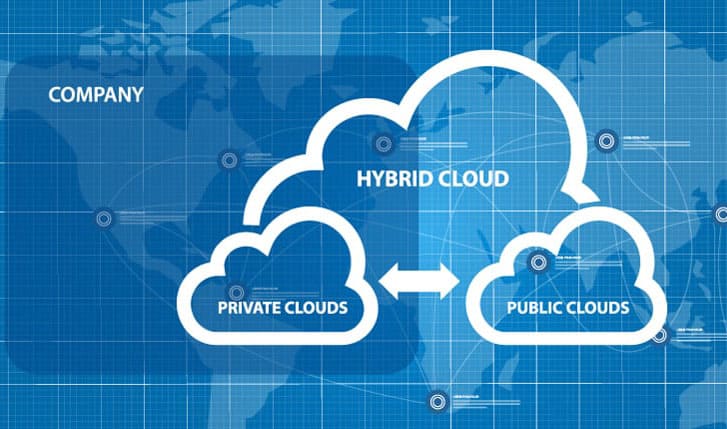What is a Managed Hybrid Cloud Hosting Provider?
Connectria
Author
Date
October 25, 2019

The vast majority of organizations house at least some workloads in the cloud, and many of them in multiple cloud environments. The IBM Institute for Business Value surveyed over 1000 executives across 19 different industries and found that 98 percent of them expect to house resources in a hybrid/multi-cloud by 2021.
The need to manage cloud-based resources across an increasingly diverse environment has led Gartner to create a new category of the cloud service provider: the Managed Hybrid Cloud Hosting provider (MHCH). In fact, while they estimate that only about half of all managed cloud hosting providers deliver services across multiple hyper-scale cloud platforms today, 90 percent of managed cloud providers will by 2023.
Gartner clients can access the Market Guide for Managed Hybrid Cloud Hosting, North America here, but with Gartner’s permission, we’d like to share our insights on this growing category.
4 Key Components of the Managed Cloud Hosting Provider
In their Market Guide, Gartner provides a diagram of the typical MHCH provider. Understanding each of the components of the diagram can help you evaluate potential MHCH providers.
1. Provider Hosted Cloud
While public/hyper-scale cloud deployments have been outpacing the private cloud, according to an IDC report, private cloud spending increased by 28 percent, year-over-year, in 2018. MHCH providers should also offer hosted cloud services in their data center. For example, Connectria offers managed hosting (private and multi-tenant environments) for X86 and IBM i and AIX workloads.
2. Hyperscale Public Cloud
To qualify as an MHCH provider, the managed cloud provider must also provide services for hyper-scale cloud environments: AWS, Azure, GCP, etc. While they don’t technically need to support more than one hyper-scale provider, many of our customers deploy workloads in more than one. AWS/Azure combinations are common, especially for organizations with in-house development departments.
There are three subcategories of environments not explicitly shown in the diagram, but which Gartner covers in their report:
- On-Prem Cloud – Some organizations host workloads in their own cloud environment. If your organization does this, you might look for a provider that can also provide remote monitoring/management services. These services can be especially beneficial if your sysadmin suddenly leaves the organization or you have an open role you can’t seem to fill.
- VMware Workloads – Many cloud providers (AWS, Azure, IBM, etc.) allow you to run VMware workloads in their cloud environments. One of the advantages of this is that it simplifies cloud migration. If you have on-prem VMware workloads and you’re thinking of migrating to a hyperscale environment, look for a managed cloud provider that can support a VMware cloud environment.
- Hyperscale environment on-prem – Microsoft and AWS offer solutions that allow you to run an Azure (Azure Stack & Azure Stack HCI) or AWS (AWS Outposts) environment outside of their hyper-scale data centers, e.g., on-prem or in the managed cloud provider’s data center. The idea is that this gives you the best of both worlds: an AWS/Azure cloud in an on-prem environment.
3. Common Tooling and Services
Moving to the center of the diagram, we get to what we see as the crucial lynchpin for an effective hybrid/multi-cloud strategy: the tools you use to manage all of these environments. The leading hyper-scale providers all offer their own tools, primarily designed for their environments. If you’re managing multiple cloud environments from multiple vendors, you need a tool that gives you a unified view across all your environments.
We developed a tool called TRiA, which allows the organization to manage all of their cloud environments from a single console. TRiA comes standard with all our managed services solutions. It’s also available as a separate license.
Rusty Putzler, Connectria’s COO, recently spoke at an IBM conference about how one of our customers uses TRiA to manage their multi-cloud environment, saving over $1M a year.
4. Unified Experience
Our final stop on our trip around Gartner’s diagram is with the end-user. We’ve already mentioned the benefit of a tool that provides visibility across your clouds from a single console, but a unified experience is more than that.
If your managed cloud provider is offering services across multiple cloud environments, e.g., Azure and IBM, you should have more than one engineer assigned to your account. Those are very different environments, and it’s difficult for one engineer to be an expert in both. If you only have one “jack of all trades” assigned to your account, you may not be getting the depth of experience you need.
Conversely, if you have multiple engineers assigned to your account, these individuals should work together as a team. Many multi-cloud environments require orchestration between workloads, so it’s important for the team to work together to achieve your goals. Silos don’t work any better when outsourcing IT management than they do inside your organization.
Experience Counts
As mentioned earlier, Gartner estimates that about 50 percent of managed cloud hosting providers could be considered MHCH providers today. By 2021, that percentage is expected to jump to 90 percent. That means roughly 40 percent of managed cloud providers will be staffing up to support new environments over the next two years.
As anyone who’s ever tried to staff up internally to support a particular platform knows, it’s not easy. Qualified IT talent can be hard to find, expensive to hire, and difficult to retain. Now, more than ever, organizations need to do their due diligence when comparing managed cloud providers.
Contact Connectria to speak with one of our advisers. Connectria provides hosting services for both X86 and IBM workloads. We also provide a complete portfolio of managed services, including cloud migrations, security and compliance, disaster recovery, remote monitoring and management, and more, for AWS, Azure, GCP, IBM, and VMWare clouds.
Keep Reading
Prepare for the future
Tell us about your current environment and we’ll show you the best path forward.
Fast track your project. Give us a call.






